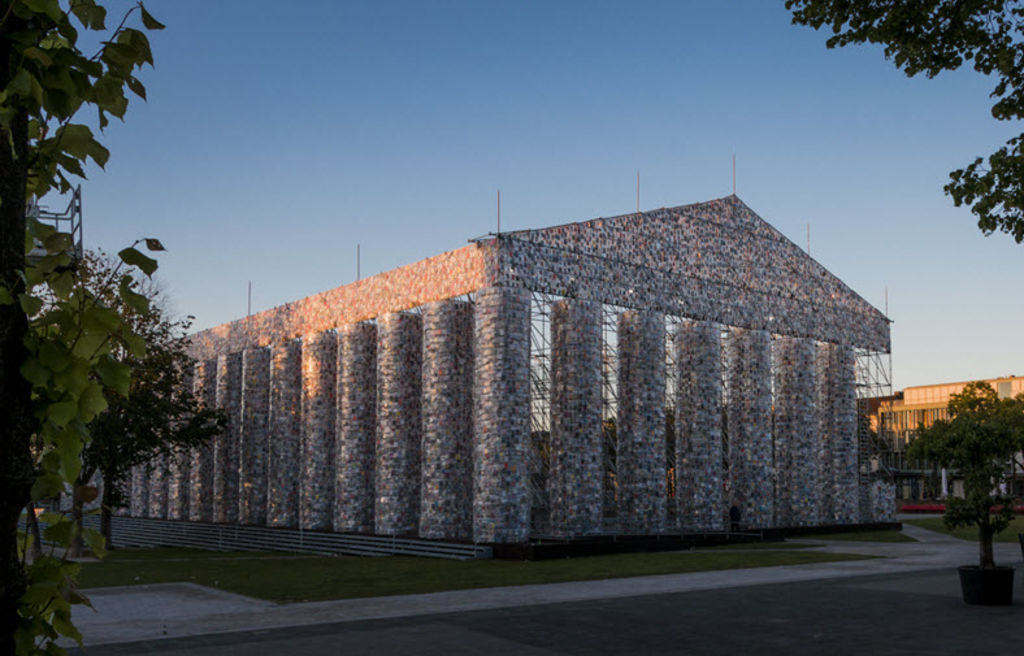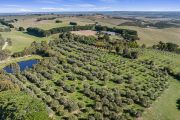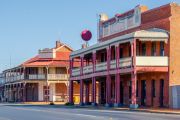
Artist creates life-sized replica of Parthenon from banned books
The Parthenon stands as the world’s largest monument to democracy and western civilisation.
Built across nine years from 447 BC the building serves as a powerful symbol of free thought and expression.
Now an Argentinian conceptual artist has drawn on these ideals to create a stunning installation reflecting the cultural damage done by repressing speech and censoring art.
Buenos Aires-born Marta Minujin has created a full-scale replica of the Parthenon in Kassel, Germany, from about 100,000 books that have been banned or censored around the world.
The huge structure is the centrepiece of the 100-day Documenta 14 art festival, and aims to symbolise the importance of freedom of thought and speech.
Working with a local university, the artist selected more than 170 books that are banned in different countries around the world, from The Foundation of the General Theory of Relativity to the Twilight saga, and called on people to donate books from the list that were personally meaningful for them.
The books were then attached to steel scaffolding in the shape of the Parthenon using plastic wrap. This made sure the books were protected from the elements so that people could take them home with them after the installation is taken down in September.
Other banned books making up the structure include The Adventures of Tom Sawyer, The Kite Runner and Gossip Girl.
In a statement, the artist said that the Parthenon represented “the aesthetic and political ideals of the world’s first democracy”.
“Democracy without books is not democracy,” Minujin said.
The location of the replica is also symbolic, with the Parthenon of censored books sitting on the same site where the Nazi Party burned about 2000 banned books in 1933 as part of the “campaign against the un-German spirit”.
The artwork is a larger and more expansive version of a piece Minujin did in the 1980s following the collapse of the civilian-military dictatorship in her home country. That smaller Parthenon replica was made out of the books that were banned under the military junta that ruled Argentina from 1976 to 1983.
Documenta director Adam Szymczyk said the issues that the original work addressed were just as relevant today.
“Censorship, the persecution of writers, and the prohibition of their texts motivated by political interests and attempting to influence our thoughts, our ideas and our bodies are once again widespread again,” Szymczyk said.
“The Parthenon of Books sets an example against violence, discrimination and intolerance.”













